Eyelid surgery: What it is, how much it costs, what the risks are
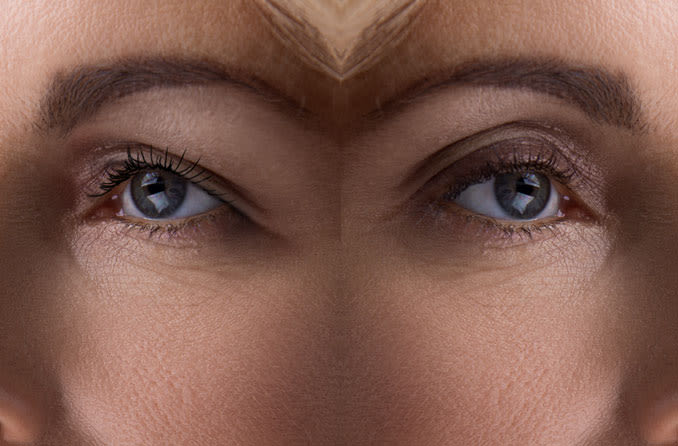
Schedule an exam
Find Eye DoctorCosmetic eyelid surgery can make you look and feel younger, which is why it continues to be popular in the United States.
But eyelid surgery is not without risks.
If you’re considering blepharoplasty (the medical term for eyelid surgery), upper/lower eyelid surgery, droopy eyelid surgery or Asian eye surgery, here is what you need to know:
What is eyelid surgery?
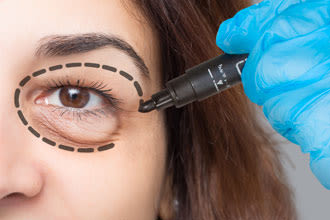
Eyelid surgery is a type of oculoplastic surgery that encompasses a handful of procedures designed to improve the general appearance of the eye area, including a reduction of puffiness or drooping related to aging and/or heredity.
All eyelid surgeries are performed on the lids or surrounding tissues, not the eyes themselves.
Eyelid surgery is typically performed by a cosmetic plastic surgeon or by an oculoplastic surgeon. An oculoplastic surgeon is an ophthalmologist who specializes in plastic and reconstructive surgery of eyelids, eyebrows and other parts of the face.
Who are the best candidates for eyelid surgery?
The best candidates for eyelid surgery are healthy, non-smoking individuals (recovery from surgery is slower if you smoke) with no serious eye conditions or medical conditions that might impair healing.
A positive outlook and realistic expectations for what eyelid surgery can achieve are also important, experts say.
Is eyelid surgery common?
Eyelid surgery ranked in the top five cosmetic surgical procedures in 2018, according to the latest data from the American Society of Plastic Surgeons. More than 206,000 eyelid surgeries were performed that year, down 1 percent from 2017.
Among adults age 55 and over, eyelid surgery topped the list of cosmetic surgery procedures.
Is eyelid surgery covered by insurance?
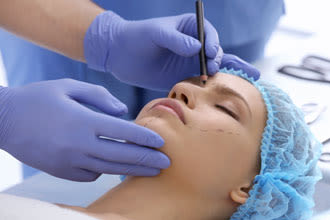
Health insurance may cover all or some of the surgery costs in cases of medical necessity, but you must first undergo visual field testing by an eye care professional and meet strict established criteria.
If you have a Flexible Spending Account (FSA) or Health Savings Account (HSA), you can use these funds you've had deducted from your paycheck to cover all or part of your eyelid surgery.
Types of eyelid surgery
Blepharoplasty
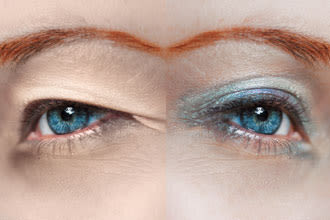
Blepharoplasty, the most frequently performed type of cosmetic eye surgery, can be performed on the upper lids, lower lids or both.
Blepharoplasty (often called an eye lift) can treat cosmetic conditions including fatty deposits that create puffiness in the upper and lower lids, bags under the eyes, excess skin and wrinkles in the lower eyelid, and drooping lids.
Blepharoplasty also can correct for folds in the upper eyelid that impair vision.
Upper/lower eyelid surgery

Upper/lower eyelid surgery reduces the swelling (edema) or puffiness around the eye. Upper and lower eyelids are susceptible to swelling because the skin around the eyes is the thinnest and most delicate in the body.
Swelling around the eyes naturally occurs as we age, but other causes include inherited facial features, medical issues like allergies and thyroid or sinus conditions, as well as stress, dehydration and sleep deprivation.
Puffy eyes also can be caused by changes in the fat pads located on both the upper and lower eyelids. These fat pads allow the muscles around the eyes to move easily, but as people age, fat pads often move forward and the membrane over them relaxes, creating puffiness around the eyes.
The pouches also can fill with fluid, making the puffiness more apparent.
Temporary fixes for the swelling include eye drops to treat allergies, cold compresses, adequate hydration and sleep, and even hemorrhoid creams that contain phenylephrine, which constricts blood vessels and tightens tissue.
Surgery to remove, reposition or replace the fat pads in the upper and/or lower lids is a more permanent solution.
About the procedure: After administering local anesthesia and oral sedation, the surgeon makes a very fine incision along the crease of the upper eyelid, along the eyelash margin or inside the lower eyelid.
He or she then removes the extraneous fatty tissue and excessive skin from the eyelids and tightens the skin and muscles to reduce both wrinkles and puffiness.
SEE RELATED: Eye bag surgery
Droopy eyelid surgery
Eyelid ptosis (pronounced toe-sis) is the medical term for droopy upper eyelids. A diagnosis is made by assessing where the eyelid is in relation to the pupil of the eye.
“The eyelid is usually just above the pupil. In people with ptosis, it drops to the pupil or lower,” says Dr. Alan Matarasso, MD, FACS, and president of American Society of Plastic Surgeons. “The other term you’ll sometimes hear is ‘bedroom eyes’ because the eyes look sleepy.”
Ptosis is primarily associated with the aging process, but it can occur in children.
Droopy eyelids also can develop after corrective eye surgery or an injury. Other causes of ptosis include an eye tumor, neurological disorder or systemic disease, or a weakness in the levator muscles that lift the eyelid.
Severe ptosis can contribute to vision problems.
Drooping eyelids are best treated with surgery that tightens the levator muscles and improves vision and appearance.
SEE RELATED: Ptosis (droopy eyelid): Can treatment cause problems?
Asian eyelid surgery
Asian blepharoplasty, which is also known as double-eyelid surgery, reshapes the skin around the eyes and creates a crease in eyelids that lack one.
Approximately half of the Asian population are born with monolids, or eyelids with no visible crease above the lash line.
“Asian eyelids lack the distinct fold across the upper lid that’s called the supratarsal crease,” Matarasso says.
“Asians have a much lower fold, and they also may have a preponderance of puffier, more fatty tissue there,” he adds. “One of the main goals of Asian eyelid surgery is to make a more distinct supratarsal crease.”
An estimated 1.3 million people worldwide underwent double eyelid surgery in 2017, according to a survey by the International Society of Aesthetic Plastic Surgery.
Asian eyelid surgery is reportedly the most common aesthetic procedure in Taiwan, South Korea and other parts of East Asia as well as Northeast India.
People of Asian descent often choose the procedure to help minimize the puffiness associated with monolids that may make them appear to be tired.
Others choose the surgery because they want a more “wide-eyed” Western look, and for this reason the procedure has become controversial in some areas.
About the procedure: During Asian eyelid surgery, an incision is made in the upper eyelid and a small amount of skin, tissue and fat is removed. The incision line is hidden in the newly created eyelid crease.
By creating a larger opening between the upper and lower eyelids, the eyes become more visible.
Is eyelid surgery safe?
Like all surgeries, eyelid procedures carry a certain amount of risk.
Risks related to eyelid surgery include anesthesia issues, infection, pain that may persist, swelling, bruising and bleeding from incisions. Eyes may become dry and sensitive to the sun and other bright light.
Patients may also experience a temporary or permanent change in vision, with a rare chance of blindness.
Changes in skin sensation, unfavorable scarring, and the need for revision surgery are other potential risks related to eyelid surgery.
READ NEXT: Pyogenic Granuloma
How long is recovery from eyelid surgery?
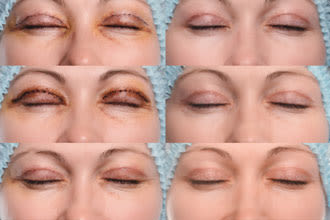
Bruising and swelling following eyelid surgery usually peaks on the day after surgery. Cool compresses can ease the bruising and swelling.
Recovery, meaning your return to normal activities, usually takes seven to 10 days following blepharoplasty. Most of the bruising and swelling after eyelid surgery should have faded within two weeks of the procedure.
How much does eyelid surgery cost?
The average cost of cosmetic eyelid surgery is $3,163, according to 2018 statistics from the American Society of Plastic Surgeons.
The actual cost of blepharoplasty varies widely. That $3,163 average cost does not include fees for anesthesia, operating room facilities or other related expenses.
Your cosmetic eyelid surgeon’s fee also will vary, based on the type of procedure, your surgeon’s experience and where you live.
Eyelid surgery should be considered a long-term investment since improvements often last 10 years or more.
Want cosmetic eyelid surgery but worried you can’t afford it? Plastic surgeons often offer financing plans for patients.
How do I find an eyelid surgeon?
Choosing a cosmetic surgeon with extensive experience in the specific procedure you are interested in can help reduce the risk of complications and increase the chances of a positive result.
Check, too, for any board certification from plastic or cosmetic surgeon professional associations.
READ NEXT: Canthoplasty (cat-eye surgery)
Page published on Monday, August 5, 2019






